How to cut bluefin tuna: everything you need to know
Summary:
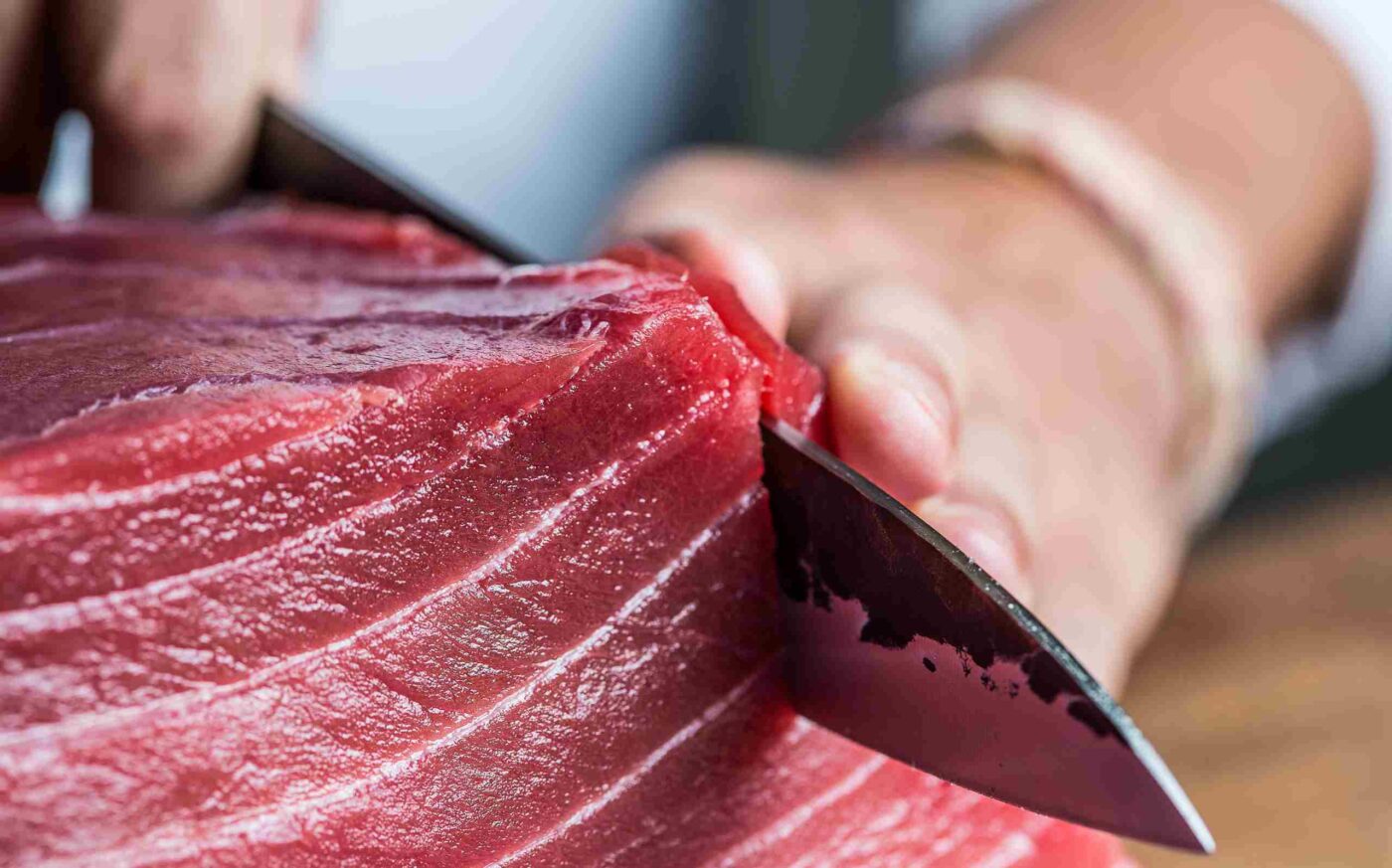
A logbook by Sensei Hiroshi Umi.
Looking almost like a pyramid, or a reddish rock jutting out from the sea, the itamae stands before a formidable piece of bluefin akami, the meat of the deepest red to be found around the belly and back of the fish. With loving care, the expert chef stands before his sacred board, removing the dark meat (bloodline), and arranging his knives (yanagiba or hocho) to proceed to slice up this outstanding specimen. To give a graphical idea, the upper part of this splendid loin is known as the sekami, the middle is named the senaka, with the seshimo below.
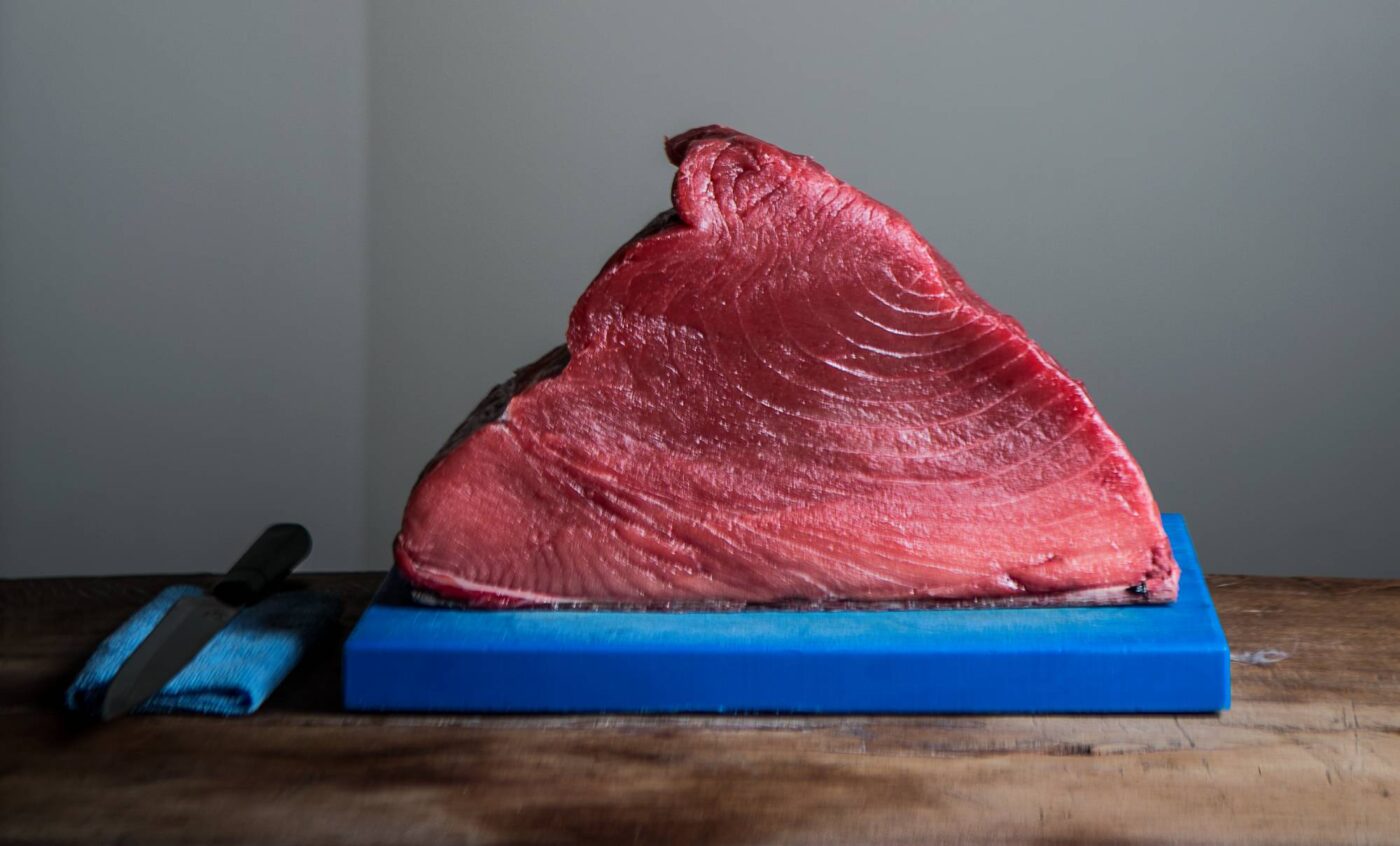
As tuna lovers are well aware, akami translates as “red meat”, while the prefix “se” means loin… and these are the building blocks for tekkamaki or maguro sashimi (sliced tuna meat). We offer both beginners, and those of the initiated wishing to revise these concepts here, certain details of the different cuts or kinakata, which can ultimately be summarised as five.
The importance of a good cut
They all serve to highlight the flavour of each piece. If the flesh is not cut just right (in other words, against the grain, in particular for large fish), you can tell as you bite into it, and in the texture: an undesirable chewiness from the fibre, and a loss of the umami…
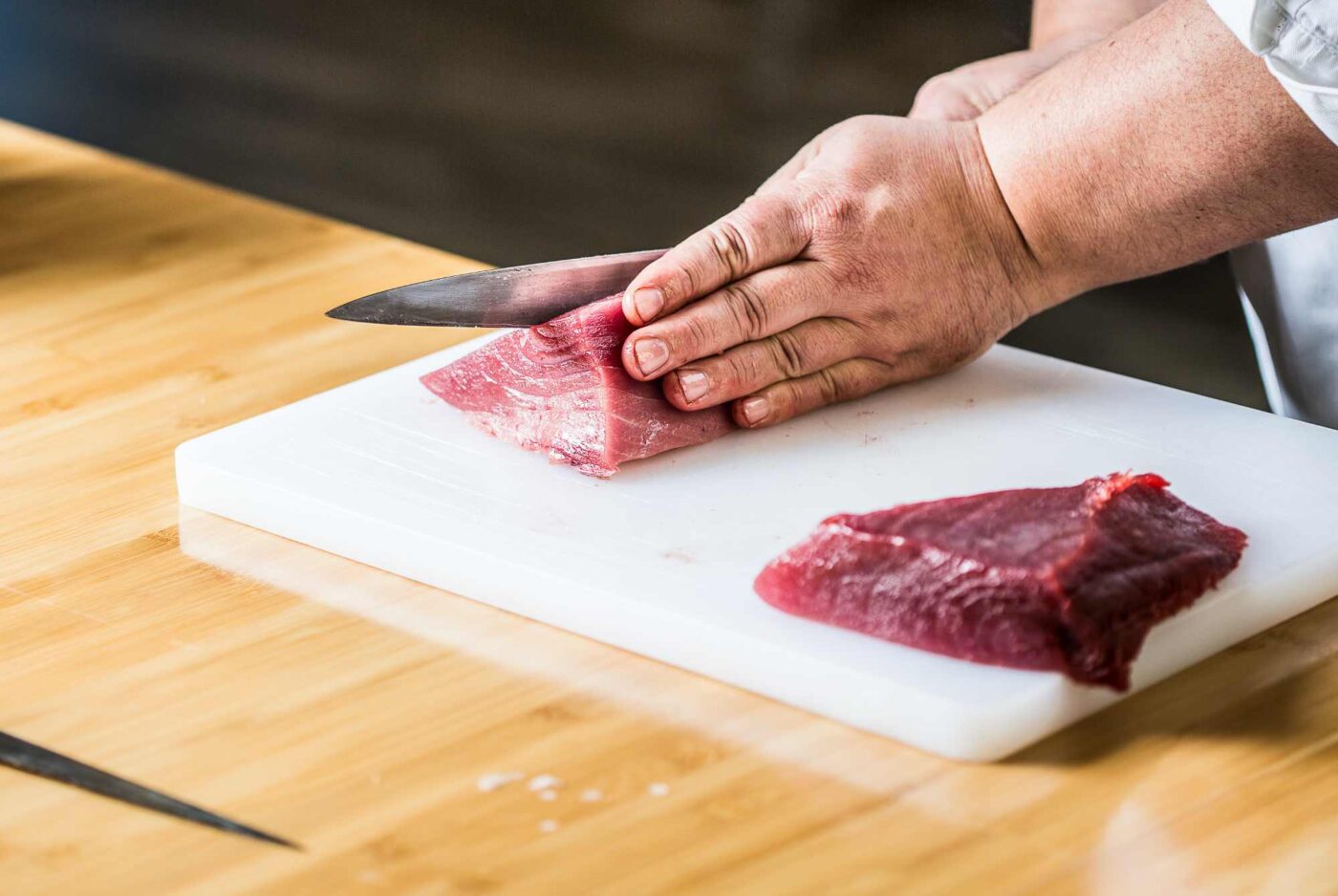
The hira-zukuri is the first cut, the most frequent or standard. The hira-zukuri results in a flat slice, like a domino, measuring some 10 mm thick and 80 in length. It is also known as hira-giri, and runs perpendicular to the board. The cut is made in a single movement, and most often (depending on the size and physiognomy of the fish) runs in a straight line, from right to left.
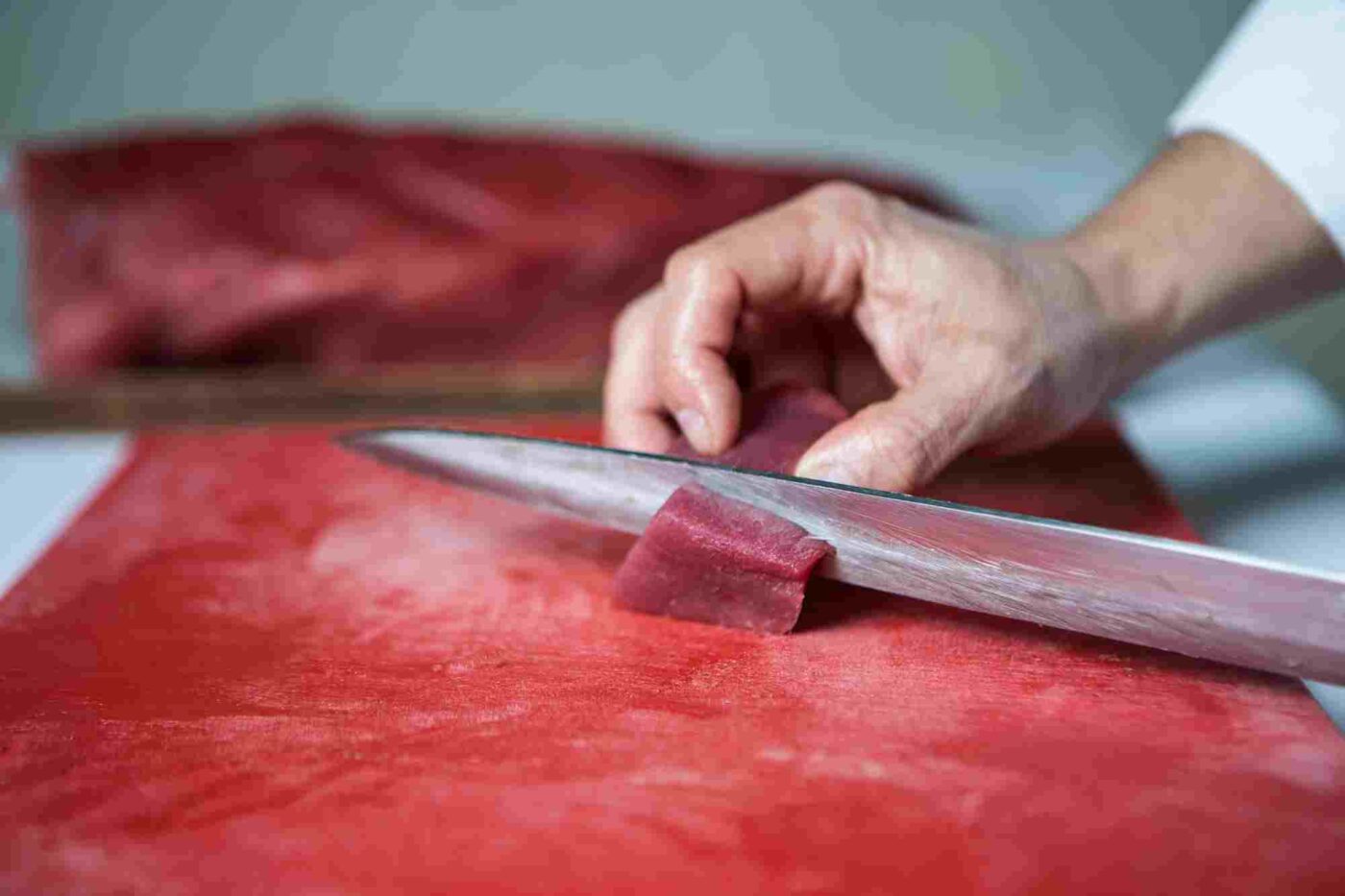
The hiki-zukuri is a variant, giving thicker pieces. Lastly, they are given a stepped arrangement, like playing cards spread out in threes, to form “a landscape”, as the best itamae would say. As for tartar, we carefully observe how these tiny dice of akami are cut and flesh is even scooped out with a spoon from between the fibres and tendons, whether from the loin or the parts closer to the backbone.
Of sakus and sashimi
One technique which corresponds almost exclusively to our beloved tuna (or otherwise the bonito) is the kaku-zukuri cut. Given the firmness and compact structure of the akami, the itamae first unravels and separates the piece along its length, so as to deal with it more effectively. Once it has been cut into strips (sakus, the red ingots measuring four fingers, or around 8 x 4 cm) he then proceeds to cut it into perfect cubes of 2 x 2 cm or if you prefer the Imperial system of measurement, ¾ inch. In Spain these parallelograms are normally referred to as blocks.
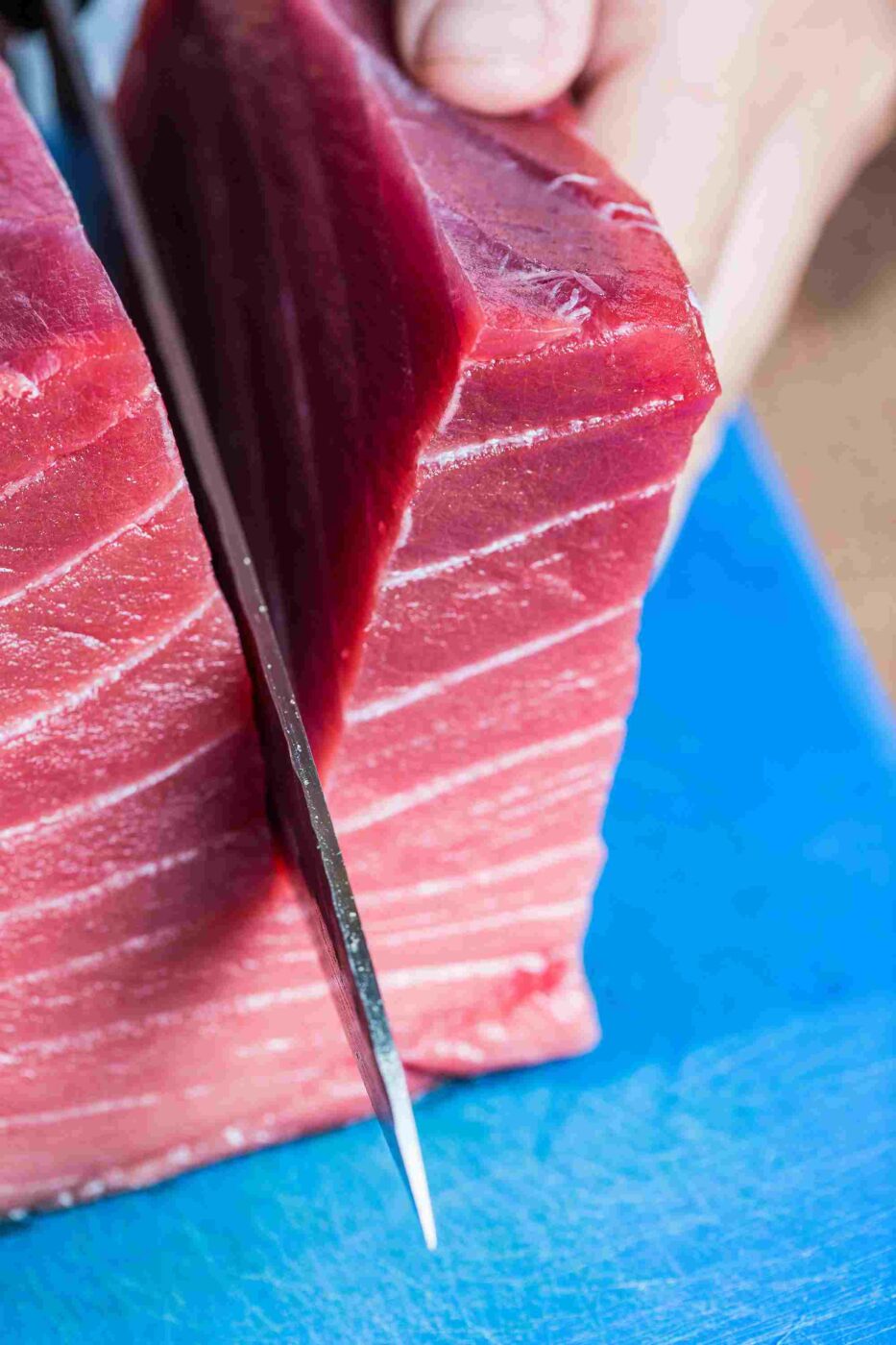
As for sashimi, the sacred strips which translate as “cut or sliced-through body or meat”, the sogi-zukuri or sogi-giri cut is used. This is simply a diagonal cut, in which the master’s skill is reflected in a perfect 45-degree angle. It runs from right to left, since hocho knives are honed to a cutting edge on one side only. The wrist movement and rhythm are essential. Nothing is superfluous.
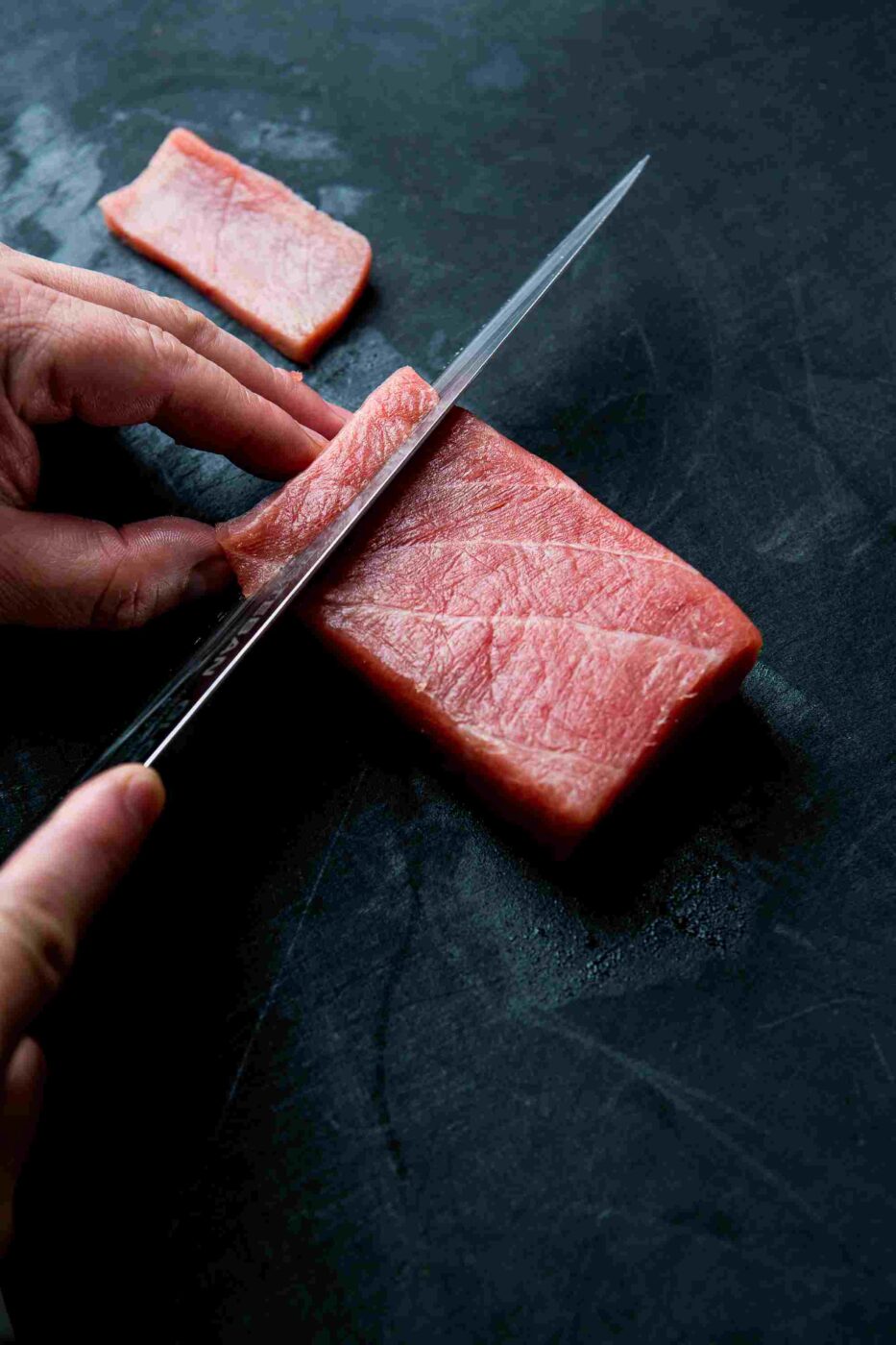
Usu-zukuri: the most complex cuo
Lastly, and in particular for white fish such as sea bass or grouper, or seafood like squid or cuttlefish (ika), if the aim is for a translucent slice, then the required cut is usu-zukuri. This is the most difficult cut, demanding great mastery to create a product which in the eyes of the bedazzled diner looks more like the finest rice paper.
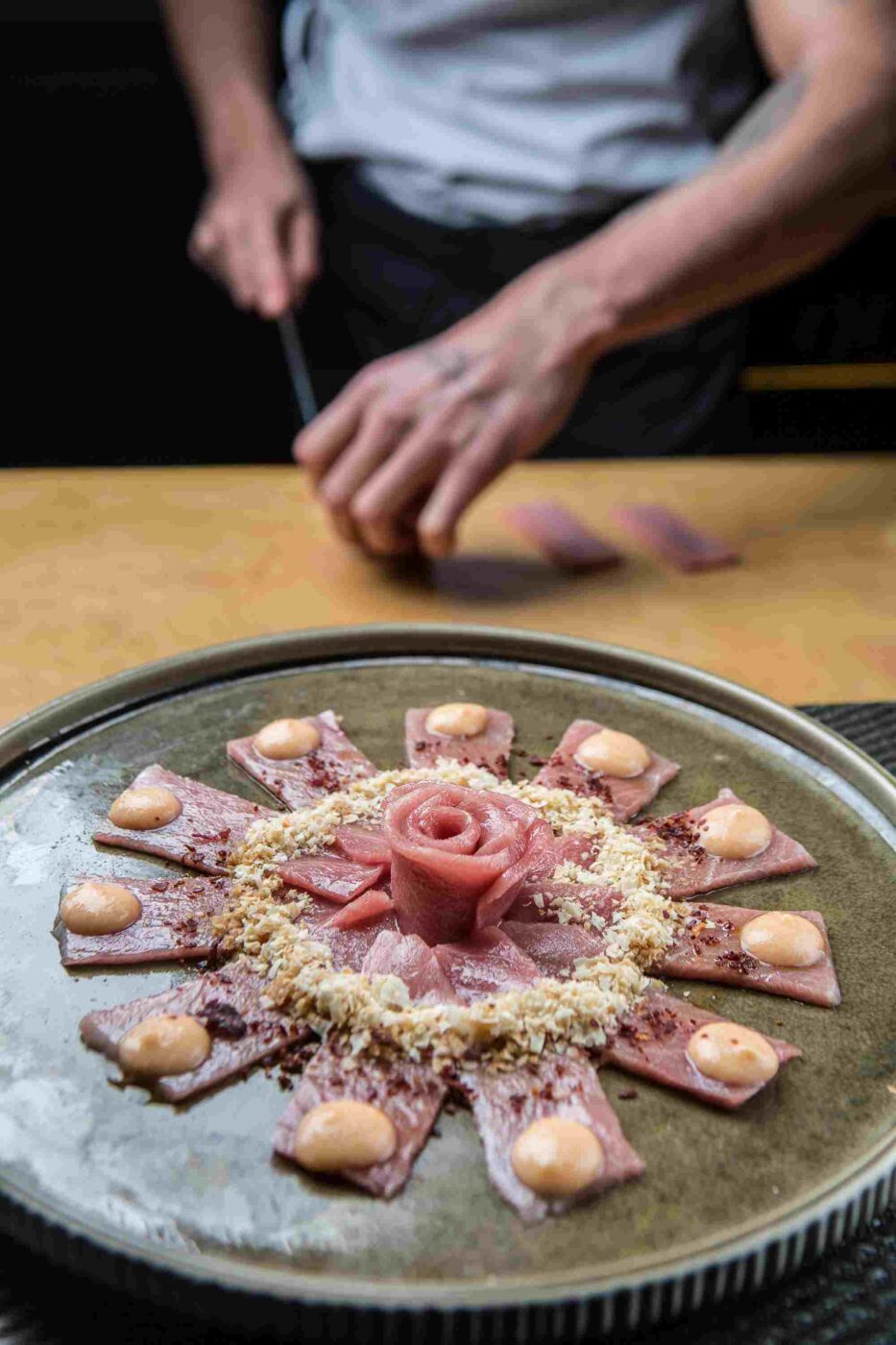
Tuna chutoro can also be spun out this way. The finest veils, with their ethereal marbling and range of colours, set out on the plate in a spiral, like the petals of the chrysanthemum, a revered flower which is even featured on the coat of arms of my country’s emperor himself.
